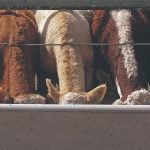It is easy to see why drones, also known as unmanned aerial vehicles (UAVs) are without a doubt the hottest new technology to hit the Farm Belt.
They offer a relatively inexpensive option for comprehensive field scouting, allowing farmers to easily pinpoint troubled spots in their fields for closer inspection.
We suspect that over time they will prove powerfully transformative, changing agriculture in ways not yet anticipated. For example, drones could end so-called “drive-by crop scouting” when a farmer inspects the crop out the window of the pickup. It may also replace the evening crop tour, which is the closest some farm couples get to a date during the busy summer months.
Read Also

Calling all Co-operator readers
Hey farmers, we want to hear your Manitoba Co-operator stories: the articles that stuck out, the farm history you watched on our pages.
But it won’t happen any time soon the way Transport Canada’s rules are written.
Flights over the farm are deemed commercial, and as such, the operator is required to apply for a permit, which takes 10 to 20 business days, specific to each flight. This is clearly unworkable for agricultural applications. The federal agency has, however, left the door open to reviewing those requirements. Farm organizations will undoubtedly be anxious to get that process off the ground.
But don’t expect the missus to thank you.














